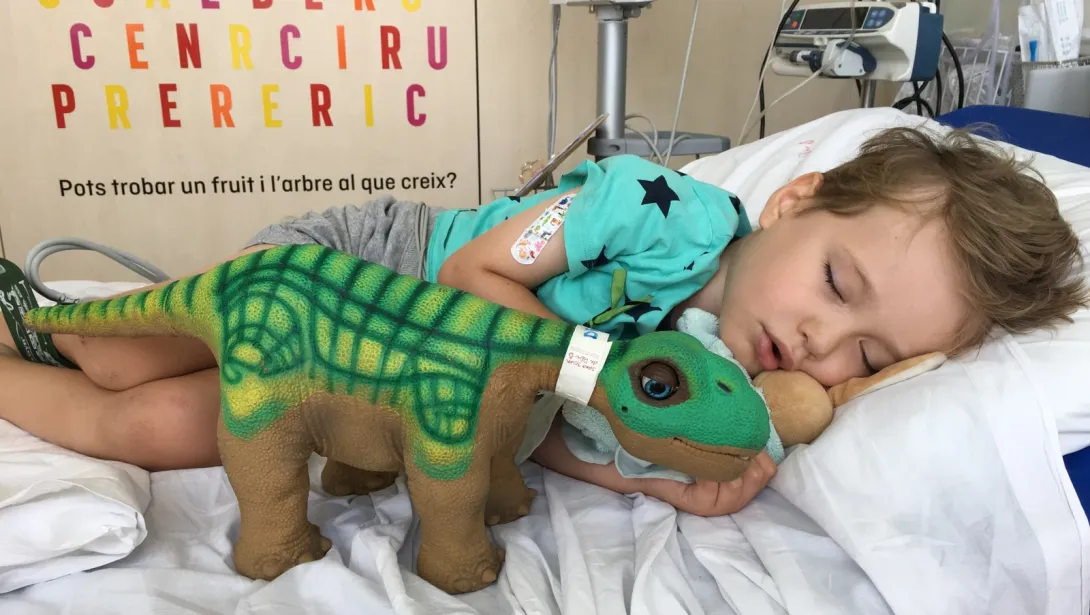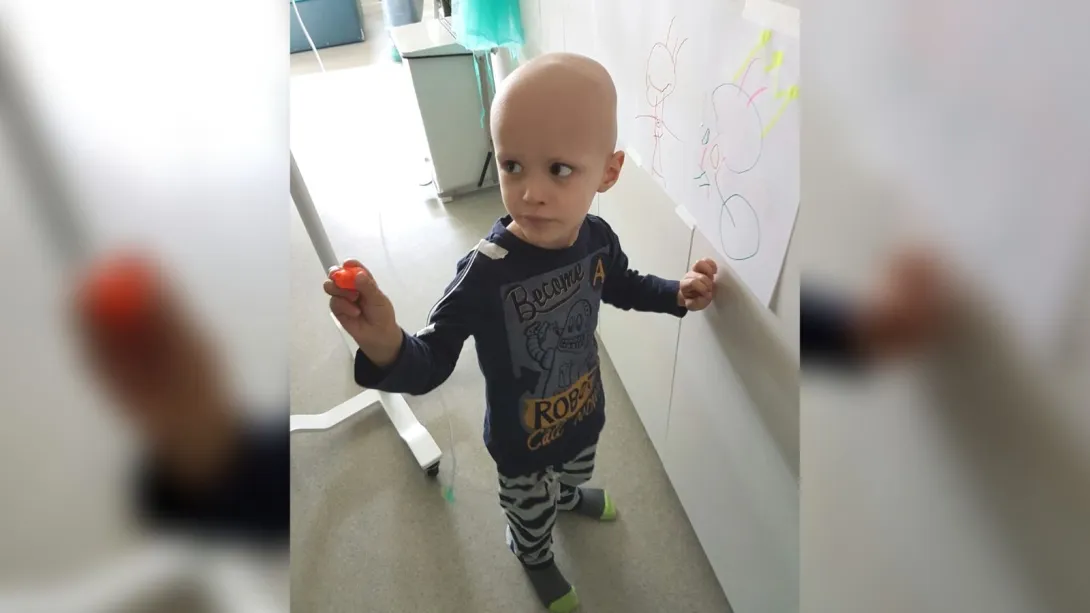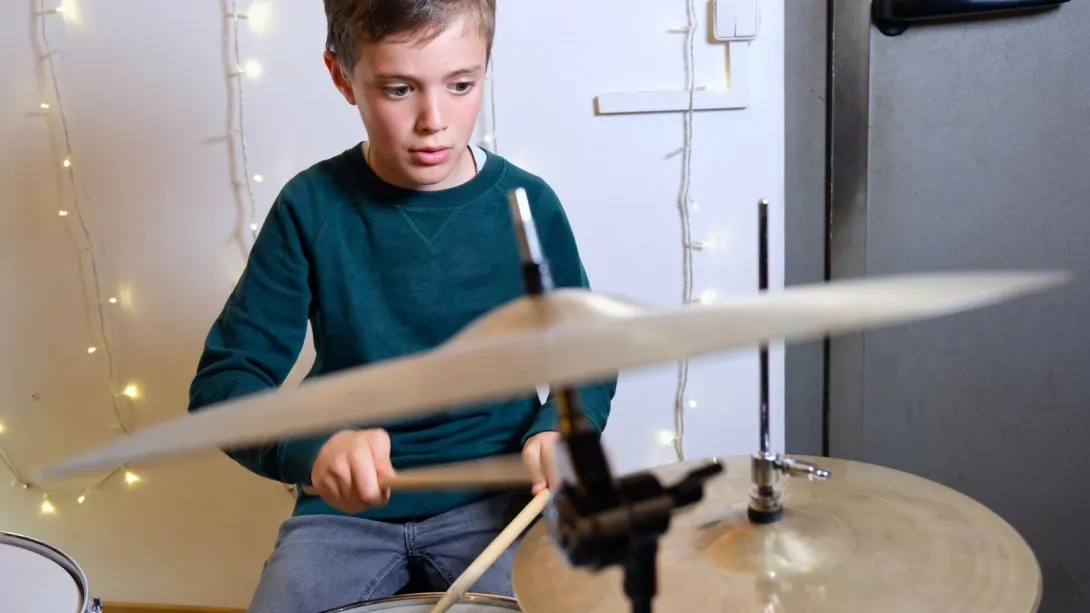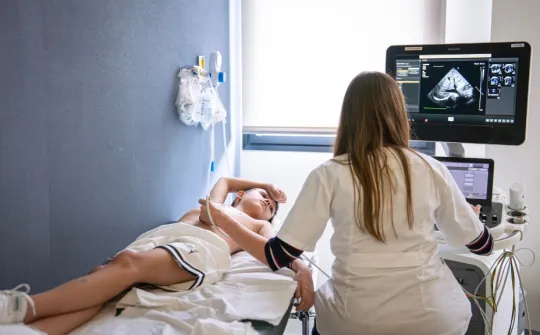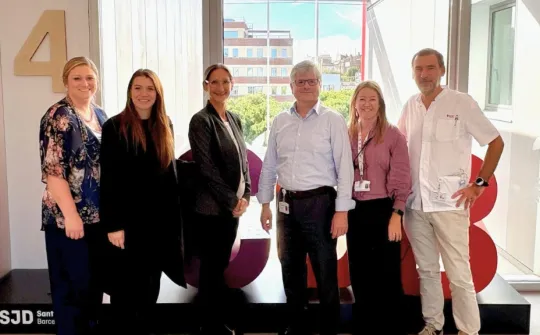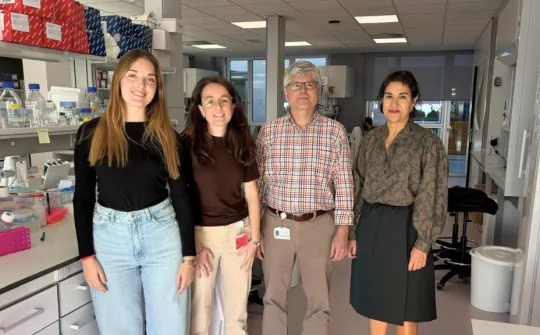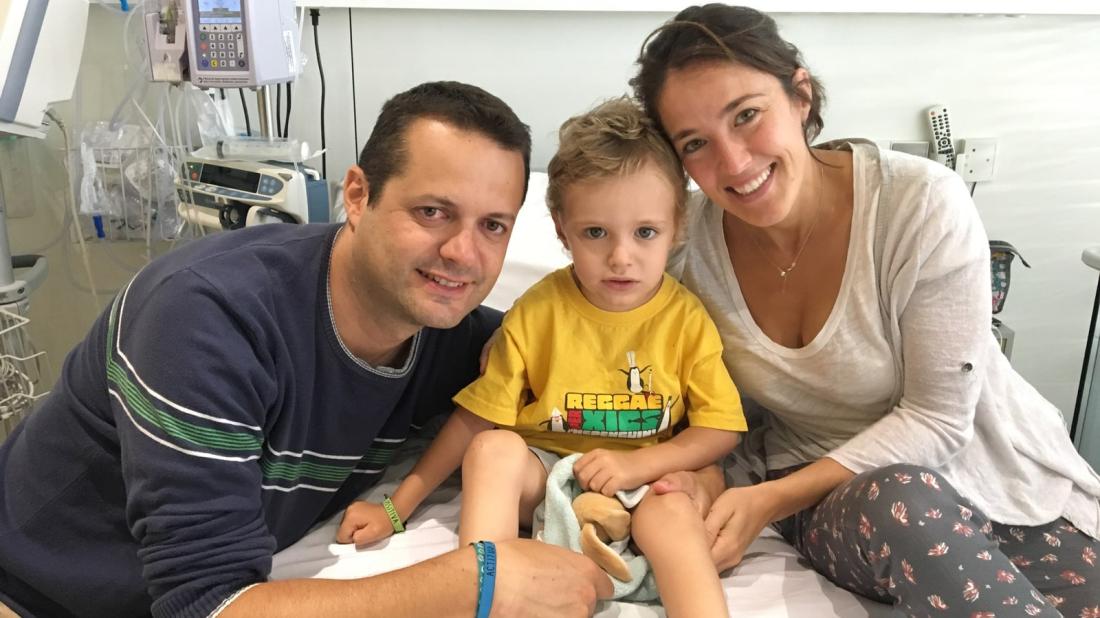
Parents of the first neuroblastoma patient to receive Naxitamab immunotherapy treatment share why they decided to take part in the clinical trial
Pol was diagnosed with a neuroblastoma when he was only two years old. His cancer required every available treatment option for this tumour type, including a new immunotherapy treatment that was being trialled. Seven years later, he is completely cancer-free.
Joan Ramon and Laia, the parents of this young boy from Barcelona, remember how they spotted the first warning sign of the disease one day in August 2016. ‘We were at the beach when I saw that Pol had a lump on his head, behind his ear. It was a large lump and I thought it was strange because I hadn't seen it before,’ recalls Joan Ramon. ‘Although it wasn’t hurting him, we decided to take him to the emergency department that the SJD Children's Hospital has on Calle Numancia. There, the doctor who assisted us told us to go to the Hospital for some tests. I remember saying I'd take him eventually, but I was told not to wait. So then next day we came to the Hospital. That's when it all started.’
At the SJD Barcelona Children's Hospital, the team performed an ultrasound on Pol, uncovering the neuroblastoma. The tumour was in a very advanced stage: it had already metastasised and spread to different parts of his body. ‘After that, it was all very fast,’ recounts Laia. ‘They fitted the port-a-cath straight away and told us they'd have to operate, start chemotherapy, radiotherapy, and also immunotherapy.’
All available treatment options for an aggressive neuroblastoma
The team treating Pol knew immediately that the boy would have to face the full arsenal of therapies for his tumour, because his particular neuroblastoma was very aggressive. They knew this thanks to the prediction system developed a few years prior by a team of researchers at the SJD Pediatric Oncology Lab, which allowed them to predict the aggressiveness of the neuroblastoma immediately after diagnosis, within 24 hours. ‘Knowing there’s a solid treatment protocol for the disease your child has is really helpful. It gives you hope and helps you to fight off that uncertainty you face when you get a diagnosis as difficult as the one we got,’ explains Joan Ramon.
Pol started chemotherapy shortly afterwards, followed by an operation and radiotherapy. When it was time for the immunotherapy treatment, the researchers at the SJD Barcelona Children’s Hospital were taking part in a very promising clinical trial on high-risk neuroblastomas like the one Pol had. The trial was of a monoclonal antibody (Naxitamab) that had been created by the Memorial Sloan Kettering Cancer Center (MSKCC) in New York, and that had been developed by a company founded by the father of a patient (Y-mAbs). This antibody markedly increased survival rates, from 35% to 75%.
‘Preliminary trials (phase 1) took place at the MSKCC. Then the company Y-mAbs obtained the rights to register Naxitamab and started manufacturing the antibody. This coincided with us being equipped to administer the antibody at SJD,’ says Jaume Mora, Scientific Director of the SJD Pediatric Cancer Center Barcelona. ‘Both Y-mAbs and MSKCC trusted our group to handle the administration of the antibody. Pol was the first patient to be cured thanks to the combination of therapies he received: chemotherapy, radical surgery, radiotherapy and Naxitamab. Naxitamab was passed in record time by the Food and Drug Administration (FDA) in the USA in November 2020, and now it is a branded drug in many countries around the world, under the name DanyelzaR (in honour of Daniella, the daughter of Y-mAbs Therapeutics’ founder)’.
The first patient in Spain to be treated with Naxitamab
Pol’s parents recount when the treatment was suggested to them. ‘The medical team told us our son met all the criteria to be a candidate in this immunotherapy trial, and we trusted them 100%,’ explains Joan Ramon. ‘Everything they had told us would happen regarding the disease had happened. We felt extremely well-cared for and we knew that we were in the hands of real experts at a leading childhood oncology centre. So we agreed without hesitation. It wasn't easy because, since this was the first patient-use, the doctors didn't fully know how Pol would tolerate the treatment, and he didn't have a good time of it. But seeing how he is now, we’d say yes again in a heartbeat,’ adds Laia.
Pol is now 9 years old, is completely healthy, and only has to attend routine check-ups to ensure that, should any long-term side effects from the treatment arise, they are detected as soon as possible. He paved the way so that children and teenagers nowadays can have this treatment in an outpatient setting, in an attempt to minimise the side effects from treatment.
He and his family wanted to get involved in childhood cancer research by making donations. They also contributed to making the SJD Pediatric Cancer Center Barcelona a reality by raising money through a unique fundraising campaign called ‘El equipo invencible’, or ‘The Unbeatable Team’.
